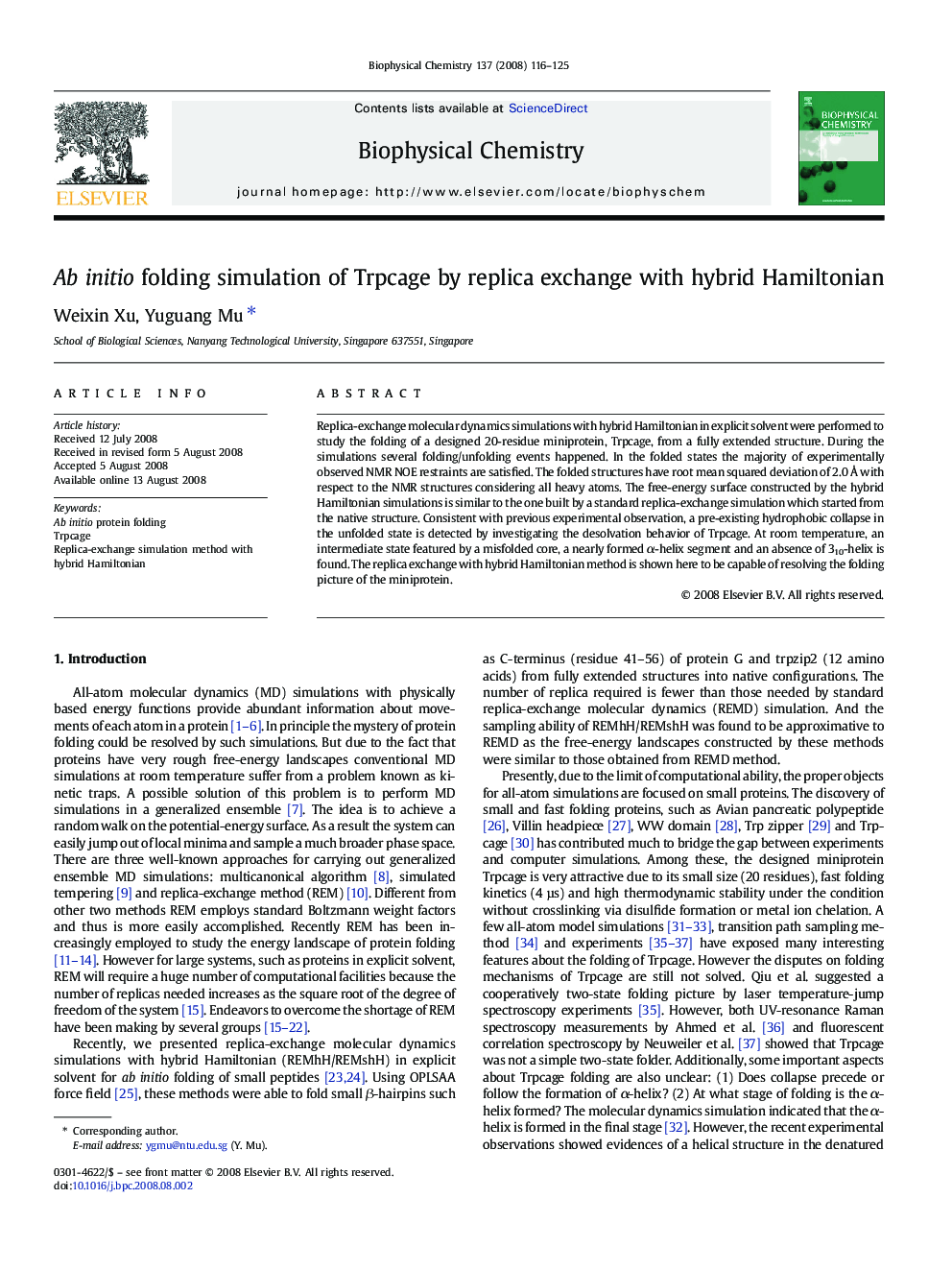| Article ID | Journal | Published Year | Pages | File Type |
|---|---|---|---|---|
| 5371941 | Biophysical Chemistry | 2008 | 10 Pages |
Replica-exchange molecular dynamics simulations with hybrid Hamiltonian in explicit solvent were performed to study the folding of a designed 20-residue miniprotein, Trpcage, from a fully extended structure. During the simulations several folding/unfolding events happened. In the folded states the majority of experimentally observed NMR NOE restraints are satisfied. The folded structures have root mean squared deviation of 2.0 à with respect to the NMR structures considering all heavy atoms. The free-energy surface constructed by the hybrid Hamiltonian simulations is similar to the one built by a standard replica-exchange simulation which started from the native structure. Consistent with previous experimental observation, a pre-existing hydrophobic collapse in the unfolded state is detected by investigating the desolvation behavior of Trpcage. At room temperature, an intermediate state featured by a misfolded core, a nearly formed α-helix segment and an absence of 310-helix is found. The replica exchange with hybrid Hamiltonian method is shown here to be capable of resolving the folding picture of the miniprotein.
